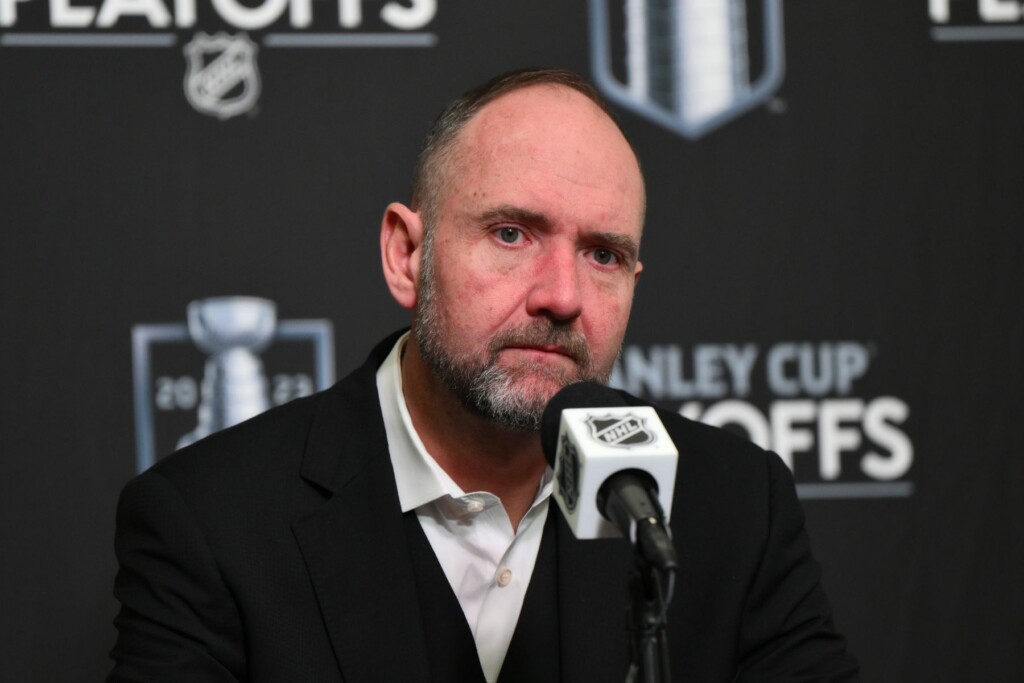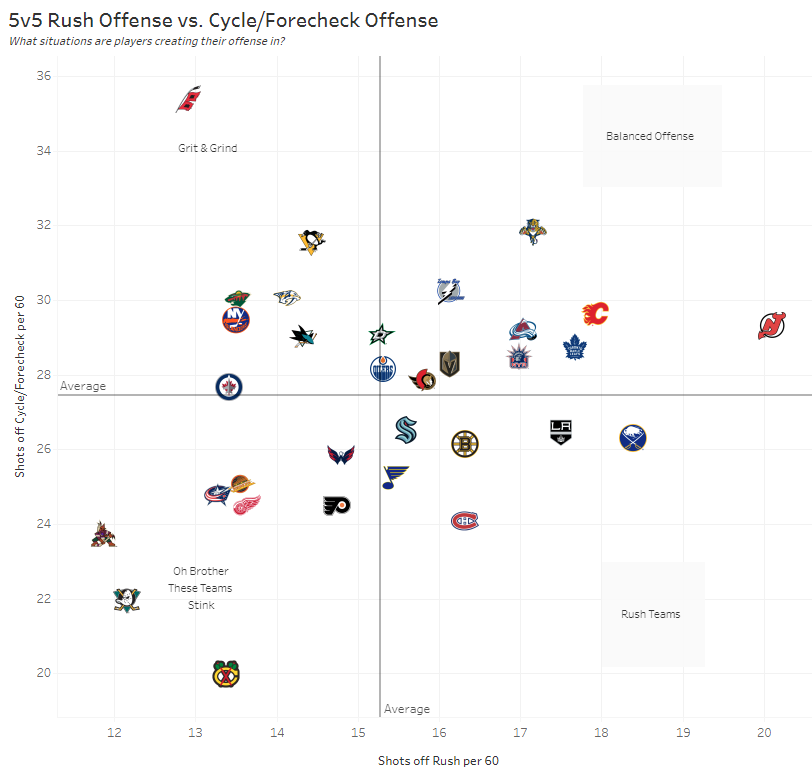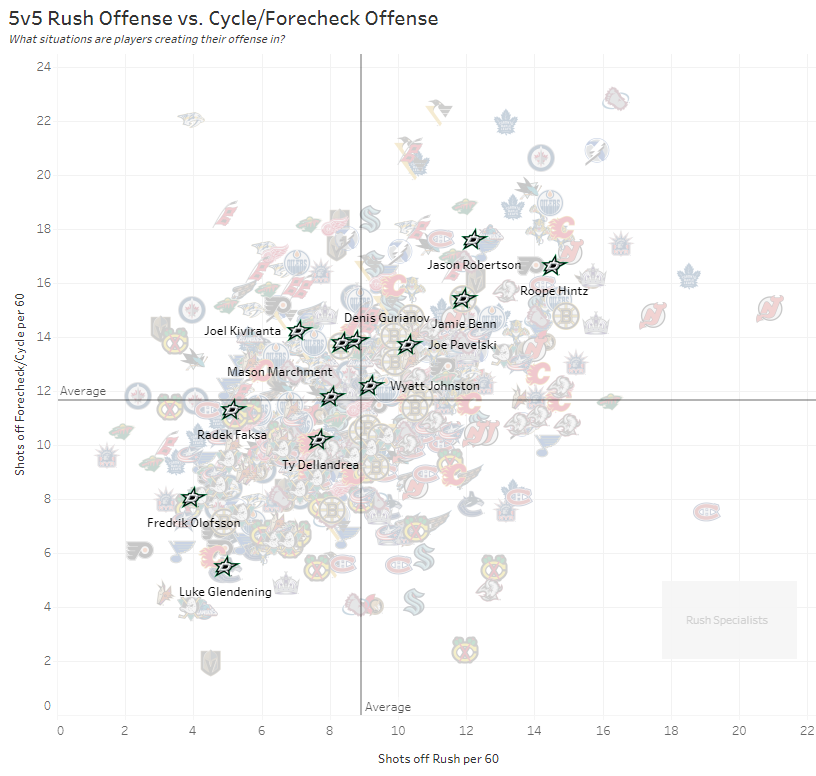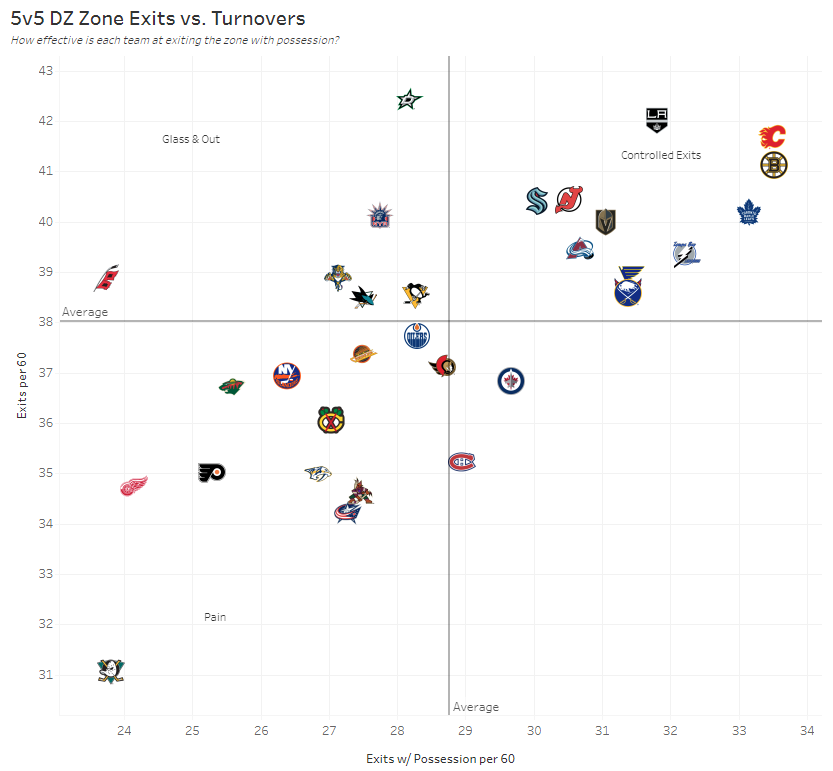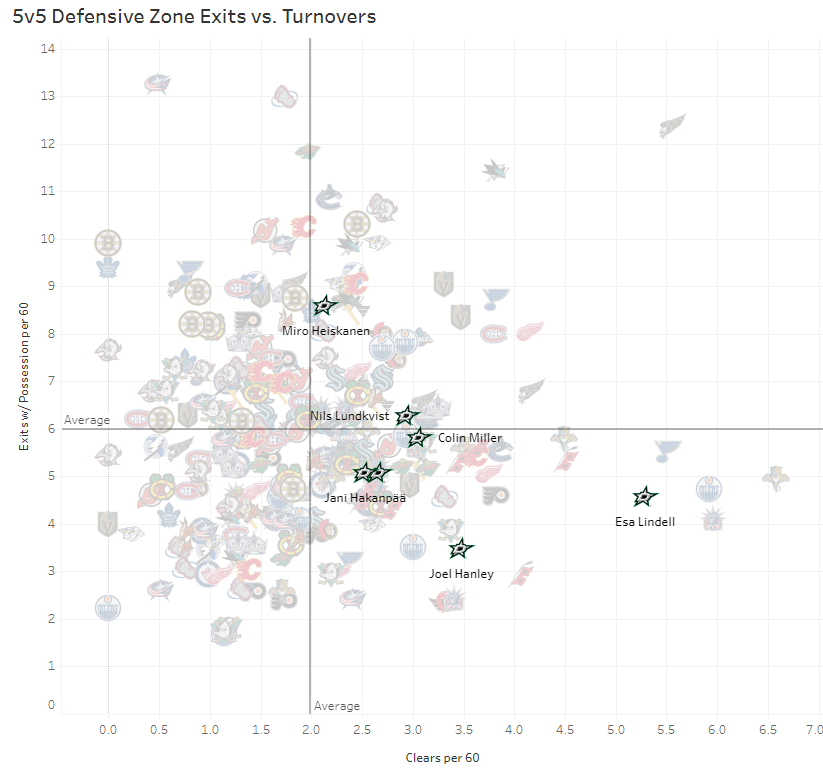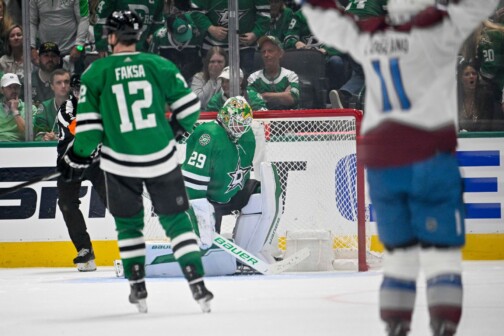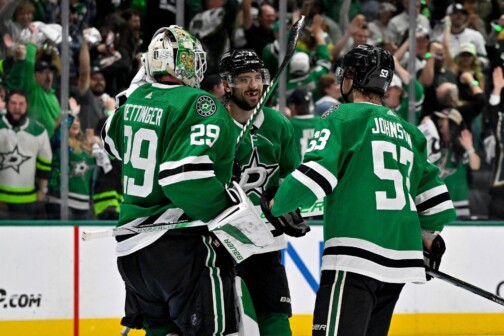Were the 2022-23 Stars really all that different from the 2021-22 squad? I don’t think so. Offensively, both teams were directed by the top line of Roope Hintz, Jason Robertson, and Joe Pavelski. Defensively, the nerve center in all three zones was Miro Heiskanen. The collective backup in net was the young, talented Jake Oettinger. The most important ingredients have been there for two seasons, yet Dallas saw wildly different results. The difference? Two very different cooks: Rick Bowness and Pete DeBoer.
Coaching matters. The Stars went from a team that couldn’t maintain possession to save their lives to being one of the most assertive teams in the league—going from a minus-51 in shot attempts through 82 games to a plus-564. They went from being a team that gave opposing goalies a lax workload to being a team that put netminders through the ringer—from minus-54 in shots on goal to a plus-244. Dallas was a minus-12 in goal differential under Bowness, and a plus-68 after him. DeBoer let his best players play to their ceiling, and it paid off.
DeBoer, being a more modern coach, was far more flexible than Bowness, who was borderline hostile when the Stars tried to outscore their problems. In a roundtable with former coach Dave Tippett and Panthers coach Paul Maurice, he explained what goes into his philosophy: “I think coaches get pigeonholed with ‘you’re this’ or ‘you’re that,’ and the coaches I find that I admired the most take what they’re given and work within that. If you have a defensive team, you build an identity around that. If you have offensive guys, you build your team identity around that.”
However, I would take that one step further. I would argue that it’s less about offensive versus defensive identities, and more about methods as they relate to those identities. Yes, scoring more goals than you allow is the name of the game, but it’s the identity that teams have in how they get there that — as we’ll see—separates the contenders from the favorites.
We’ve already seen how DeBoer’s cooking transformed the bottom line compared to Bowness. But the Stars still have yet to settle into a system that works consistently. To that end you might be surprised to learn that Dallas is neither a team that shortens the neutral zone to attack quickly (rush offense) or a team that uses prolonged pressure in the offensive zone to win a war of attrition (forechecking offense).
Why is this so significant? If coaching matters then so do systems, and this chart shows a clear disconnect between what DeBoer wants from his system (offense off the rush) and what it’s giving him (not enough offense off the rush).
Hockey only has public data on this since 2016 thanks to Corey Sznajder’s AllThreeZones project, but a pattern is developing. Cup-winning teams tend to specialize in one or the other. Colorado and Washington favored rush attacks — ranking second and fourth, respectively — while Tampa Bay bullied teams on the forecheck. DeBoer’s challenge is to figure out if he can create one or the other, if not both.
Does Dallas have the roster to do that? Yes and no.
This is where DeBoer in the role of master chef can pay off. He has only a handful of dual-threat forwards.
Now that the Stars have added another dual threat in Matt Duchene, might this finally be the time to split up the Hintz line? In years past, I made this case because it was the only way to compensate for the offensive blackhole the team was without them on the ice. But the roster is now the deepest this franchise has seen. New groupings could finally unlock the Stars to present a more consistent method of attack.
Whatever DeBoer decides, everything is going to start with the Stars getting the puck out of their zone, and this is where things get a little trickier. Zone exits are a big part of the modern game. Getting out with possession means you’re more likely to enter opposing territory with possession, and the quicker teams get there, the quicker they score. For that reason, DeBoer puts zone exits at the top of his list when it comes to defensive zone play.
Whatever designs DeBoer had, that’s not how his team operated in 2023. The Stars ranked 17th in the league in exits with possession.
At first glance this might not seem like a big deal when you look at some of the “glass and out” teams versus the “controlled exit” teams. Carolina is one the best teams in the NHL, but neither they nor the Panthers (another good playoff team) get out with control. Calgary and St. Louis were elite in controlled exits, yet both missed the playoffs.
However, going back to Sznajder’s historical data, Cup winners over the last five years tend to exit the zone with control. Vegas was one of the best, getting out of its own territory a lot, and getting out clean when they did. Colorado was far and away the best team at controlled breakouts in 2022, while Tampa Bay wrote the playbook the two years prior. Clean breakouts will be DeBoer’s biggest challenge.
Does he have something to work with?
Not really.
There’s an important caveat to that, though. The first is Thomas Harley. There’s no tracking data on him, but we can safely assume he’ll rate highly in this category. Skating out with control of the puck from the defensive zone was what defined him in juniors, and it’s what defined his scintillating performance in the 2023 playoffs. Figuring out a way to factor him and Nils Lundkvist (who is mostly average in this category, but at least better than the defenders who play more than him) into the Stars’ breakout schemes will be huge. Managing the minutes of Harley and Lundkvist at even strength could pay real dividends in helping Dallas get out of the zone cleanly. (So would including them on the second power-play unit, which is frustratingly obvious.)
That’s what makes coaching more critical than ever. The smallest tweaks have the potential to have the biggest consequences. Maybe it’s pairing Lundkvist with Heiskanen, cutting into Heiskanen’s production with the benefit of raising the floor of a young Swedish defender who still has plenty of untapped potential. Maybe it’s letting Harley eat into Esa Lindell’s minutes at even strength, which might help determine if the 21-year-old (he’ll turn 22 tomorrow) is top-four material and therefore the key to cleaner breakouts. Maybe it’s pairing Duchene with Wyatt Johnston; imagine having two, dual-threat forwards who aren’t part of the top line break 60 points. Any one of these changes may upgrade the bottom line, but collectively, perhaps they can finally give Dallas an identity on the rush or the forecheck.
This might seem hyper-critical, as if the status quo is bad. The status quo got the Stars to the brink of a Stanley Cup appearance. But it’s important to avoid getting lost in outcome bias. The goals, wins, and where they finished by season’s end shouldn’t distract from the fact that the Stars are still deficient in certain areas—areas that Stanley Cup winners have addressed and factored into their identity.
DeBoer did something critical when he took over for Bowness: he challenged the old status quo of conservative, play-not-to-lose, defensive hockey. If Dallas is to take that epic next step, DeBoer needs to challenge it once more.
Author



